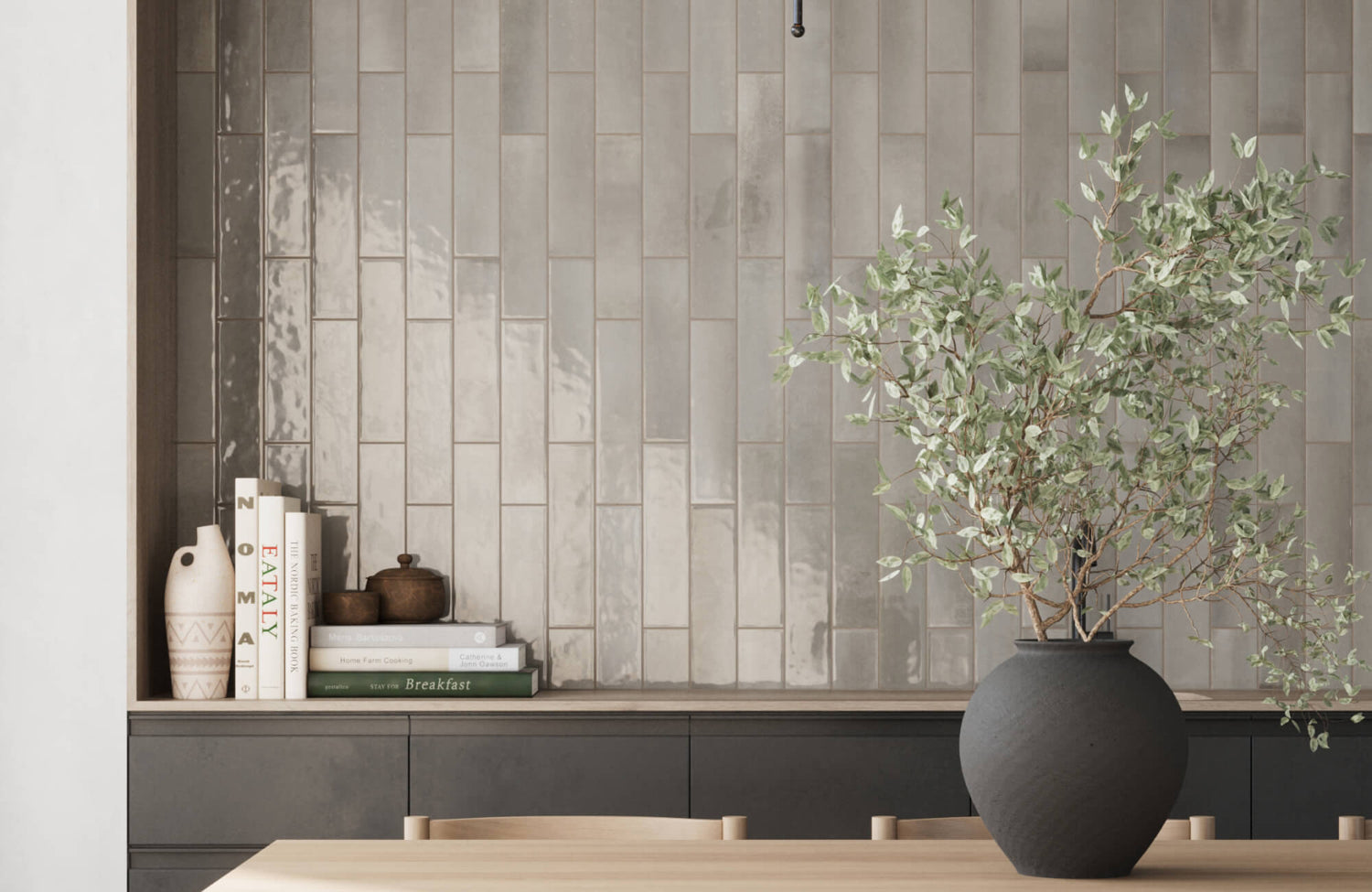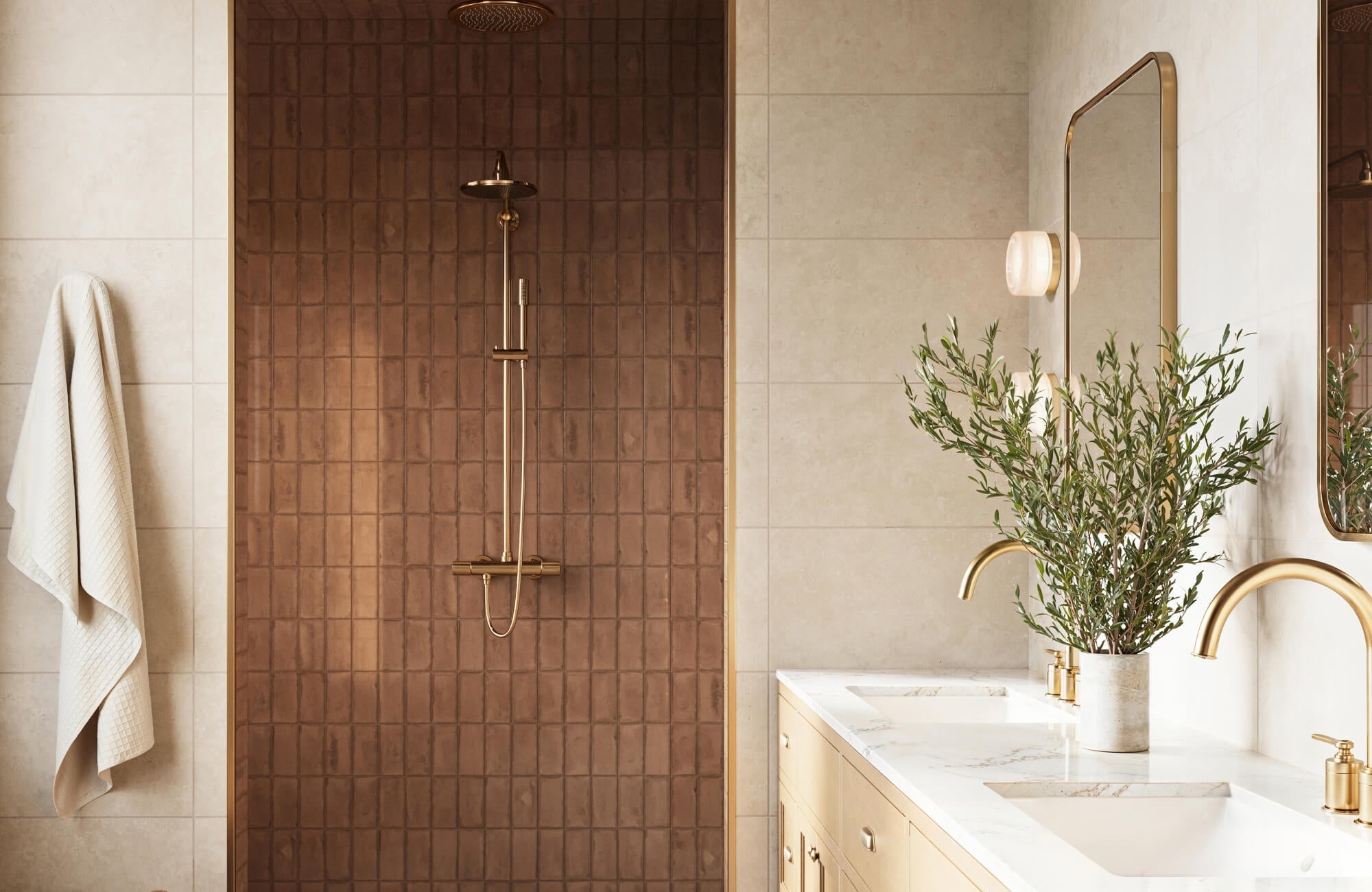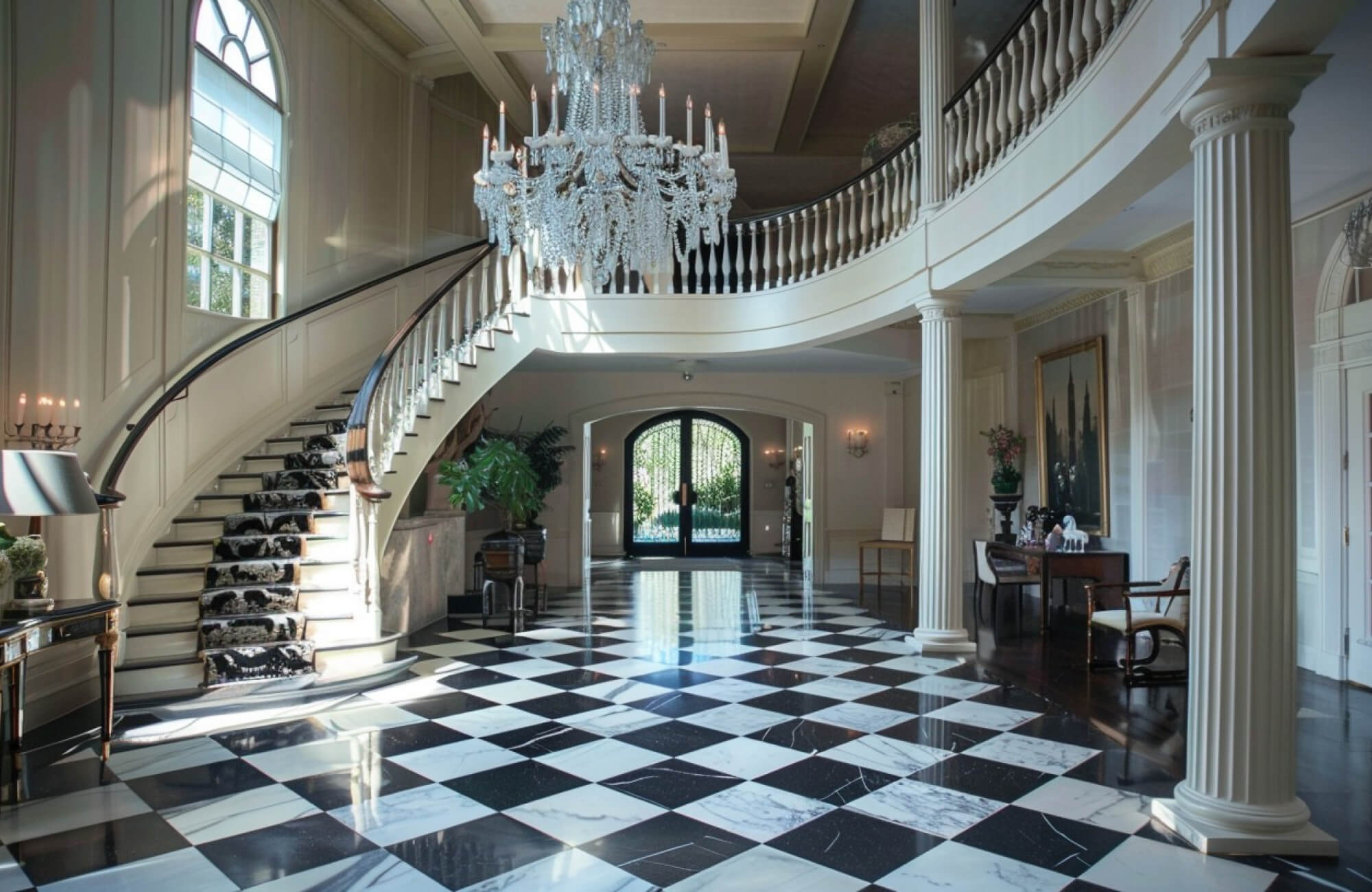Accent walls have emerged as a popular design trend, allowing you to add a touch of personality and visual interest to your spaces. By painting or tiling a single wall in a contrasting color or pattern, accent walls can instantly transform the look and feel of a room.
Among the many materials used to achieve this effect, subway tiles have risen in popularity for their clean lines and classic aesthetic. Their versatility and timeless appeal make them a go-to choice for a wide range of interior styles, from traditional to contemporary. However, the question remains: are subway tiles truly the best option for every accent wall? This article will explore the pros and cons of subway tiles, considering factors such as design style, room size, and personal preference. We will also examine alternative materials and finishes that can be used to create stunning accent walls.

Subway Tiles as A Classic Material
The subway tile, a seemingly simple glazed ceramic tile with clean, rectangular edges, has become a timeless symbol of modern design. Its origins can be traced back to the early 20th century, when it was first used to clad the walls of New York City subway stations. The practical choice of a durable, easy-to-clean tile soon caught the eye of architects and designers, who recognized its potential for both functional and aesthetic purposes.
Over the years, the subway tile has evolved beyond its utilitarian roots to become a versatile and stylish design element. Its clean lines and understated elegance make it a natural fit for a wide range of interior styles. From traditional farmhouse kitchens to contemporary urban lofts, subway tiles can add a touch of sophistication and timeless appeal to any space. One modern interpretation is the Olivia 4x16 Glossy Ceramic Tile in Dove, shown in the image above, which extends the classic subway format into a longer silhouette and features a soft light gray hue. This subtle shift in shape and color brings a fresh, contemporary twist to a beloved classic, making it ideal for refined, minimalist interiors.

The Pros of Subway Tiles for Accent Walls
Subway tiles offer a multitude of benefits that make them a popular choice for accent walls. Their durability, ease of maintenance, and aesthetic appeal make them a versatile and timeless option that can enhance any space.
Durability and Maintenance
One of the most significant advantages of using subway tiles for an accent wall is their exceptional durability. Crafted from ceramic or porcelain, these tiles are highly resistant to scratches, chips, and stains, making them a practical choice for busy areas. Their impervious surface also makes them ideal for spaces prone to moisture, such as kitchens and bathrooms.
In addition to their durability, subway tiles are remarkably easy to maintain. Their smooth surface prevents dirt and grime from adhering, allowing for simple cleaning with a damp cloth and manufacturer-approved mild detergent. This low-maintenance nature makes subway tiles a convenient and hassle-free option for busy individuals.
Aesthetic
Beyond their practical benefits, subway tiles offer a host of aesthetic advantages that can elevate the overall appeal of a space. Their clean lines and classic design create a timeless and sophisticated look that complements a wide range of interior styles. Whether you prefer a minimalist or traditional aesthetic, subway tiles can add a touch of elegance and refinement to any room.
Moreover, subway tiles are available in a vast array of colors, sizes, and finishes, allowing for endless customization possibilities. From classic white to bold hues like deep blue or vibrant green, subway tiles can be used to create a focal point or add subtle accents to a room. The versatility of subway tiles ensures that there is a perfect option to suit your individual taste and design preferences.
From Minimalist to Dramatic Visual Effects
Subway tiles offer a remarkable degree of versatility in terms of creating various visual effects. For a clean and minimalist look, consider using white subway tiles with a matte finish. This combination can create a bright and airy atmosphere that is both modern and timeless.
For a more dramatic and eye-catching effect, you can experiment with darker-colored subway tiles or tiles with a glossy finish. These options can add depth and texture to a room, creating a focal point that commands attention. A striking example is displayed in the picture above, featuring the Jaden 2.5x16 Glossy Ceramic Tile in Ink, which features an elongated silhouette and black tone. Its reflective surface and bold color make it an ideal choice for accent walls or backsplashes where visual impact is key.
Furthermore, the arrangement of subway tiles can also influence the overall visual impact. A traditional brick pattern is a classic choice, while a herringbone or chevron pattern can add a touch of contemporary flair. By carefully considering the color, size, and arrangement of subway tiles, you can create a unique and visually stunning accent wall that complements your overall design aesthetic.

Design Considerations for Subway Tile Accent Walls
When incorporating a subway tile accent wall into your space, it's crucial to consider the overall design scheme to ensure a cohesive and visually appealing outcome. The chosen tiles should complement the existing color palette, furniture, and décor elements to create a harmonious atmosphere.
Room Size and Lighting
The size of the room can significantly influence the impact of a subway tile accent wall. In smaller spaces, a dark or bold-colored accent wall can make the room feel more cramped. Conversely, in larger rooms, a dramatic accent wall can add visual interest and break up the space.
Lighting also plays a crucial role. Subway tiles can appear different under various lighting conditions. For instance, white subway tiles may appear slightly warmer under natural light compared to artificial lighting. Consider the lighting in your room and choose tile colors accordingly.
Choosing the Right Color and Size
The color of your subway tiles can dramatically impact the overall mood and atmosphere of a room. Lighter colors, such as white or cream, can create a bright and airy feel, while darker colors can add a sense of drama and sophistication. Consider the existing color palette in your space and choose a tile color that complements or contrasts effectively.
For a bold yet earthy touch, the Mikayla 2.5x5 Glossy Ceramic Tile in Olive, depicted in the image above, is an excellent option. Its rich, muted green tone adds warmth and depth, making it ideal for creating a cozy, nature-inspired accent wall that pairs beautifully with neutral or wood-toned interiors.
The size of the subway tiles can also influence the visual impact of the accent wall. Larger tiles can create a clean and minimalist look, while smaller tiles can add texture and detail. Experiment with different sizes to find the best option for your space.
By carefully considering these factors, you can create a subway tile accent wall that is both visually appealing and enhances the overall design of your space.

Subway Tiles In the Kitchen and Bathroom
Although subway tiles have long been associated with kitchens and bathrooms, their versatility extends far beyond these traditional spaces. These classic tiles can also be used to add a touch of sophistication and style to any room in your space.
Kitchen Backsplash
The kitchen backsplash is perhaps the most common application for subway tiles, known for their durability, ease of cleaning, and timeless aesthetic. To create a classic yet sophisticated look, consider using the Jaden 2.5x16 Glossy Ceramic Tile in Dove, as displayed in the photo above, which offers a sleek and elegant finish. Whether you prefer a traditional subway layout or a more modern herringbone pattern, experimenting with different arrangements, colors, and finishes can help you find the perfect combination that enhances your kitchen’s style and personality.
Shower and Tub Surrounds
In the bathroom, subway tiles are often used to create shower surrounds. Their clean lines and durability make them a popular choice for this wet area. They can also be used to create a minimalist and modern look, or a more traditional feel with a decorative border or mosaic detail.
For a tub surround, subway tiles can add a touch of elegance and sophistication. Consider using a contrasting color or pattern to create a visually interesting focal point. Subway tiles can also be used to clad the area behind a vanity or above a toilet for a cohesive and stylish look.
Beyond the Backsplash
Although backsplashes are the most popular choice, subway tiles can be used in other creative ways in the kitchen. For example, they can be used to clad the area behind a stove, above a countertop, or on an island or peninsula backsplash. These applications can add a unique and eye-catching element to your kitchen design. Incorporating tiles in unexpected areas, such as beneath open shelving or around a range hood, can also create visual continuity and tie the entire space together. Additionally, mixing tile orientations, like vertical or diagonal layouts, can introduce subtle texture and dimension without overwhelming the overall design.

Subway Tiles Beyond the Kitchen and Bathroom
As mentioned earlier, subway tiles can be used for creative and unexpected applications that can transform other areas in your space.
Laundry Room
The laundry room, often overlooked in terms of design, can be transformed with the addition of subway tiles. These versatile tiles not only add a touch of style but also serve practical purposes. Backsplashes, for instance, protect walls from splashes and stains, while accent walls create a focal point and add visual interest. Subway tiles can also be used behind the washing machine and dryer or above the folding counter to complete the laundry room's stylish makeover.
Mudrooms
Subway tiles can also make a stylish and practical addition to mudrooms, where durability and moisture resistance are key. Accent walls in these transitional spaces not only protect the walls from everyday wear but also create a welcoming and polished look. Consider using the Olivia 4x16 Glossy Ceramic Tile in Sage, displayed in the picture above, which features a soft green hue that adds a refreshing, nature-inspired tone to the space. Its elongated shape and glossy finish enhance both the visual height and brightness of the room. Whether installed behind benches, cubbies, or coat hooks, this tile can transform a functional entry point into an attractive and cohesive part of your home’s design.
Living Room Accents
Subway tiles can be a stunning addition to a living room, providing a unique and eye-catching focal point. Consider using them to create a feature wall, fireplace surround, or even a built-in bookshelf; these versatile tiles can transform your living room into a sophisticated and inviting space. For a contemporary look, opt for a herringbone or subway pattern, or experiment with different colors and finishes to find the perfect combination that suits your personal style.
Bedroom Retreats
Subway tiles can be incorporated into a bedroom to create a serene and relaxing atmosphere. You can use them to clad a headboard, accent a niche, or even add a splash of color to a bathroom within the bedroom suite. Also, consider using softer tones, such as light blues or greens, to promote tranquility and relaxation.
Outdoor Spaces
Subway tiles are not only suitable for indoor use but can also be a practical and stylish choice for outdoor spaces. You can use them to create a feature wall on a patio or deck, or incorporate them into an outdoor kitchen or bar. Choose weather-resistant tiles and consider using a mosaic pattern for added visual interest. Their durability and resistance to moisture make porcelain subway tiles, in particular, ideal for outdoor environments, ensuring they withstand the elements while maintaining their beauty.
By thinking outside the box and utilizing our innovative augmented reality (AR) tool, you can visualize and experiment with various subway tile designs in your actual living spaces. This technology helps you see the potential impact of your design choices, ensuring you select the perfect subway tiles that complement and enhance your decor.

Alternatives to Subway Tiles for Accent Walls
Though subway tiles offer a timeless and versatile option for accent walls, they may not be the ideal choice for all spaces or preferences. Let’s explore a range of alternative materials and finishes that can be used to create stunning accent walls, each with its own unique characteristics and benefits.
Marble Look Tiles
Marble look tiles like the classic white base with soft gray veining of the Aniston 2x2 Matte Porcelain Hexagon Mosaic Tile in Carrara Bianco, seen in the photo above, are a sophisticated and practical way to create stunning accent walls that evoke the elegance of natural stone. Available in a variety of colors, finishes, and veining styles, these tiles can mimic the luxurious appearance of marble while offering improved performance and lower upkeep. Whether used in bathrooms, kitchens, or living spaces, marble look tiles bring timeless beauty with a modern edge.
Pros
Marble look tiles combine refined aesthetics with everyday functionality. They are resistant to moisture, scratches, and stains, making them an ideal solution for busy or high-humidity areas. Their versatility allows them to be used across styles—from luxe traditional to minimalist modern. In addition, they offer significant savings in both cost and long-term care, making marble’s allure more accessible than ever.
Cons
Although they offer great visual impact, marble look tiles may require careful installation to achieve a seamless, natural look, especially in intricate patterns or larger spaces.
Natural Stone
Natural stone is a classic and enduring material that can add a touch of luxury and sophistication to any space. From marble and granite to travertine and limestone, there are countless options to choose from. Natural stone accent walls can also be polished, honed, or left in a rough finish to create a variety of visual effects.
Pros
Natural stone is durable and adds a timeless elegance to any space. It comes in a wide range of colors, textures, and finishes to suit different styles.
Cons
Natural stone can be more expensive than other materials, and it may require more maintenance, such as sealing to protect against stains and scratches.
Brick
Brick is a popular choice for accent walls, offering a rustic and industrial aesthetic. It can also be used in its natural state or painted to create a variety of looks.
Pros
Brick is durable and adds a warm and inviting atmosphere to a space. It can be used to create a variety of styles, from traditional to modern.
Cons
Brick can be more expensive than other materials, and it may require more maintenance, such as sealing to protect against stains and weathering.
Wood Paneling
Wood paneling can add a warm and inviting atmosphere to a room. It can be used in a variety of styles, from traditional to modern.
Pros
Wood paneling is durable and adds a natural and organic feel to a space. It can be used to create a variety of styles, from rustic to contemporary.
Cons
Wood paneling can be more expensive than other materials, and it may require more maintenance, such as sanding and refinishing.
Why Subway Tiles Are a Smart Choice for Accent Walls
Subway tiles are undeniably a smart and stylish choice for accent walls, offering a rare blend of timeless appeal, design flexibility, and practical benefits. Their clean lines and adaptable formats work across a wide range of aesthetics from classic to contemporary, making them a dependable design element in any space. Whether you're creating a bold feature in a living room, elevating a bathroom surround, or refining a kitchen backsplash, subway tiles provide the durability and ease of maintenance that busy households demand. With options in color, finish, and layout pattern, these tiles also empower you to craft focal points that are both sophisticated and uniquely personal.
However, navigating the vast array of materials and designs can be daunting, which is where our expert design services come into play. Offering personalized consultations, our design experts can help you select the perfect materials that not only fit your aesthetic preferences but also meet your functional needs. These services also aim to simplify your decision-making process by providing expert advice and tailored recommendations, ensuring that your accent wall becomes a central feature of your decor.







